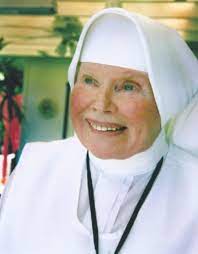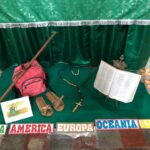Mary Clarke was an Irish-American woman who was born on December 1, 1926 in Los Angeles, California to Joseph Clarke and Kathleen May Clarke.
As an adult, she was married twice, divorced twice, and had seven children. She lived in Beverly Hills, California, and her last name became Brenner.
In 1969, when she was in her forties, Mary had a dream one night. In the dream, she was a prisoner at Calvary and was about to be executed. Suddenly, Jesus appeared to her and offered to take her place at the execution. She refused his offer, touched him on the cheek, and told him that she would never leave him, no matter what happened to her. Then, in the 1970s, Mary decided to devote her life to the Church, in part because of the dream.
As an older, divorced woman, the Church at that time banned her from joining any religious order. So, she founded a new Religious Order for older women that she called the Eudist Servants of the Eleventh Hour (E.S.E.H.). This Order was named after St. John Eudist, a Seventeenth Century French priest who founded the Congregation of Jesus and Mary, more commonly known today as The Eudists.
In 2003, the Bishop of the Diocese of Tijuana, Mexico, Rafael Romo Múñoz, approved her Order.
Mary Brenner became known as Madre Antonia, and she devoted her life to the care of prisoners of the notorious La Mesa prison in Tijuana. Not only did she serve the men there, she chose to live in the prison itself. The prisoners loved her and honored her, and they could always count on her to help them. In time, she became known as The Prison Angel. In fact, two Pulitzer Prize-winning journalists, Mary Jordan and Kevin Sullivan, wrote a book about her life called The Prison Angel. In 2010, Estudio Frontera released a film about her life called, La Mama: La vida de una monja americana en una prisión mexicana. (The Mother: The Life of an American Nun in a Mexican Prison). The film took five years to make.
Mother Antonia died in Tijuana on October 17, 2013 at the age of 86.
There are two important things to note about Mother Antonia’s story. First, she put her faith into action. That is what all Catholic Christians are called to do.
Second, she did not let her age get in the way of serving the Lord. Often, the Catholic Church has mistakenly rejected older men and women who wished to serve as priests, Brothers, or Religous Sisters. Mother Antonia’s life shows that such rejection is often a big mistake.



